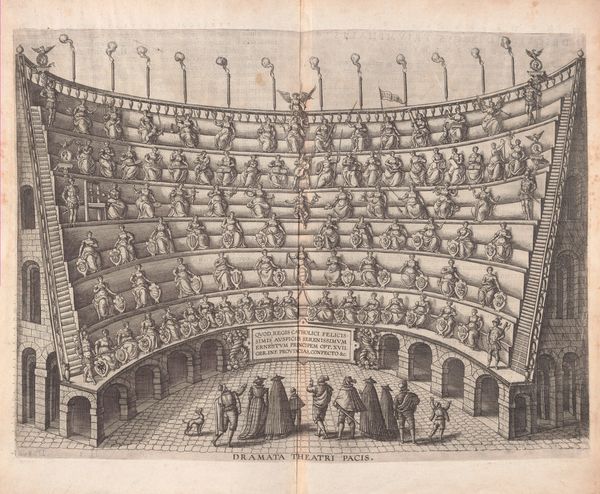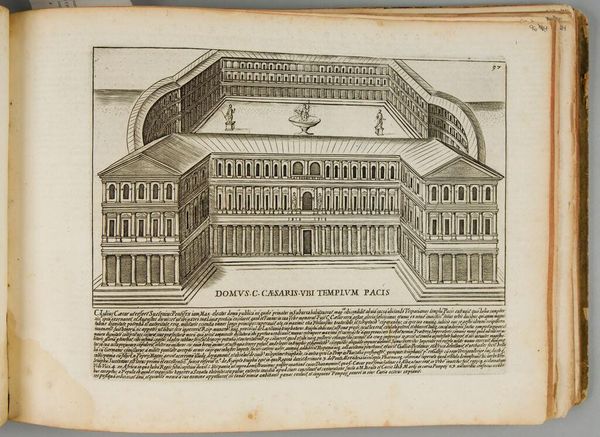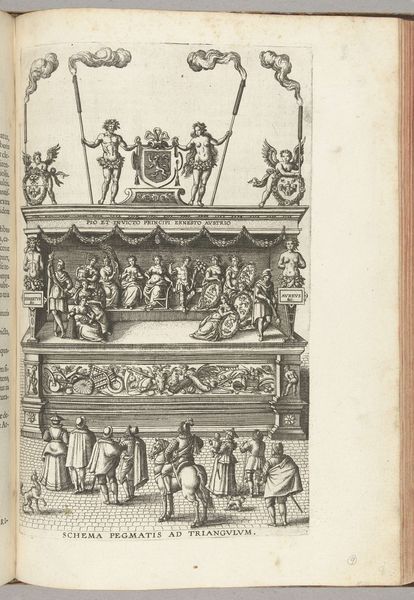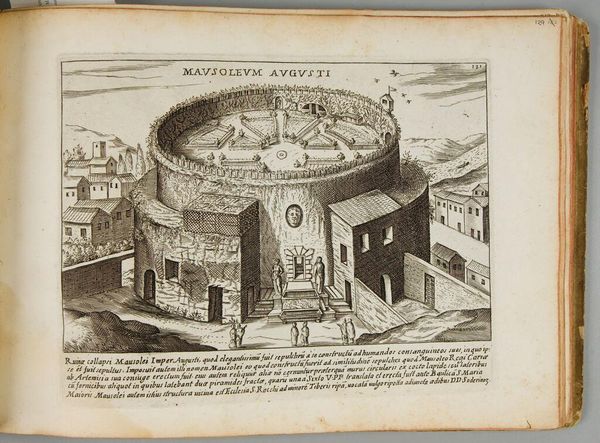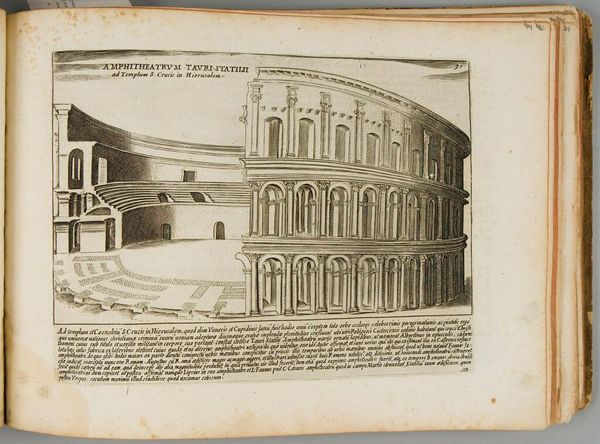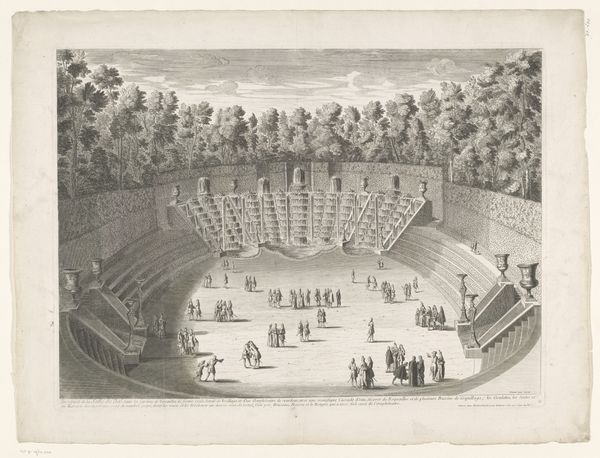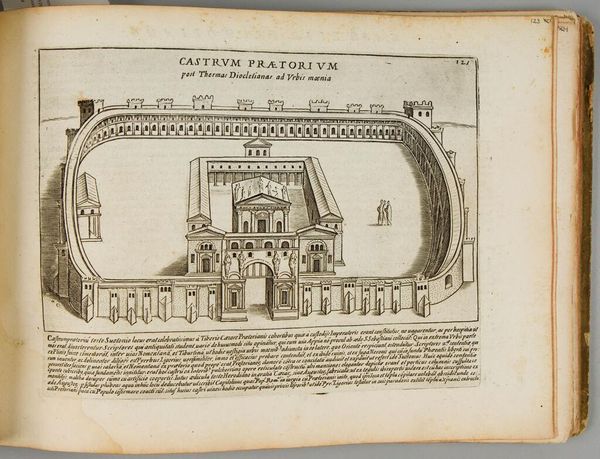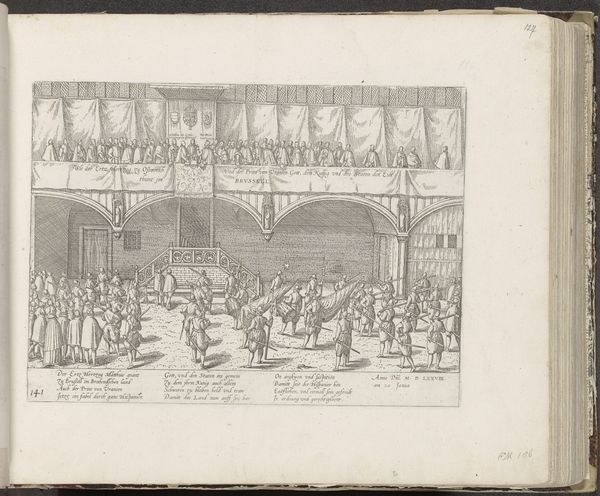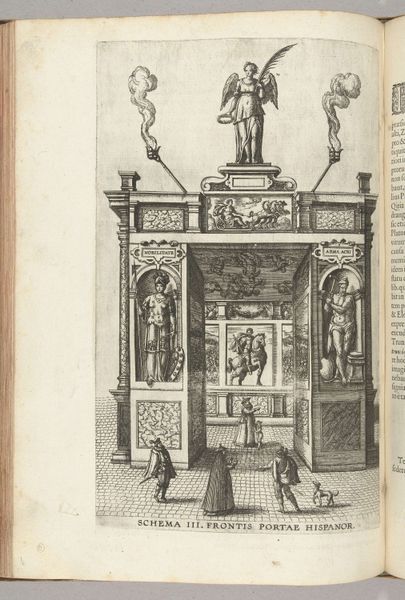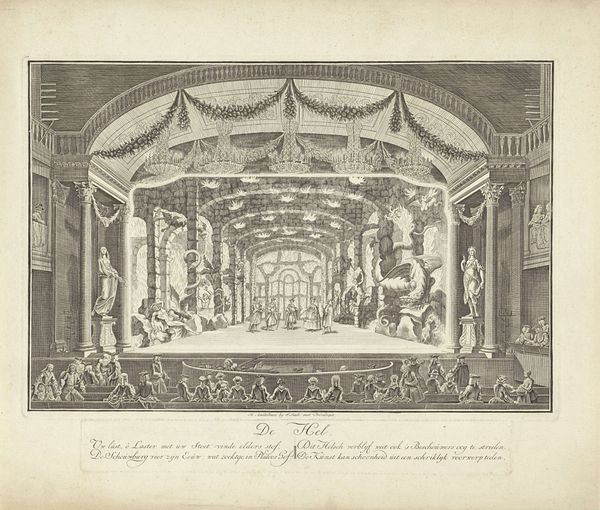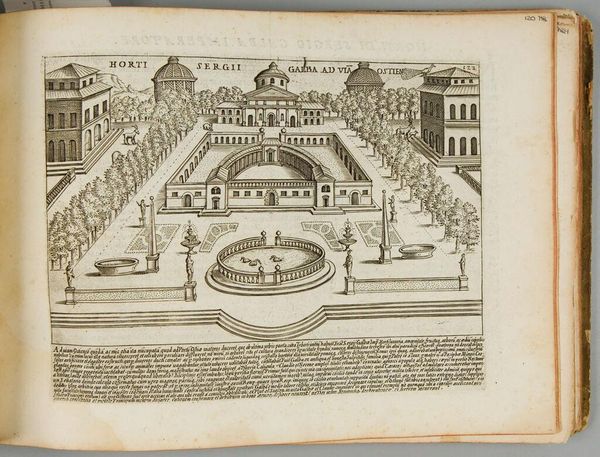
drawing, print, paper, engraving, architecture
#
drawing
# print
#
perspective
#
figuration
#
paper
#
11_renaissance
#
coloured pencil
#
cityscape
#
history-painting
#
northern-renaissance
#
engraving
#
architecture
Dimensions: height 336 mm, width 488 mm
Copyright: Rijks Museum: Open Domain
Curator: This engraving from the late 16th century, entitled "Theater van de Vrede (interieur)," which translates to "Theater of Peace (interior)," produced circa 1594-1595 by Pieter van der Borcht the Elder, immediately evokes a sense of grandeur. Editor: Yes, my immediate impression is of meticulously organized chaos, or rather, a structural dance. Look at the radiating lines of the seating contrasted with the static figures. The visual perspective almost hyperbolizes the spatial arrangement. Curator: The subject matter also speaks volumes about the cultural anxieties and aspirations of the time. The “Theater of Peace” is not merely a building; it's a symbolic space, representative of a desired utopian social order. What we're viewing can be contextualized with rising humanism—hope—across Europe and perhaps an indictment against protracted imperial projects. Editor: Precisely. Van der Borcht utilizes the receding planes of the theater to amplify the idea of perspective – both visually and conceptually. See how the artist's rendering of depth charges the scene with meaning. Curator: And how the tiers upon tiers of figures create a social panorama. The people are representations of various societal roles all in this place together. Notice they are presented with attributes that help denote which function or place each is to occupy in the cultural memory that such an image sustains. They are archetypes of their civic responsibilities. Editor: Absolutely. He utilizes symbolism deeply embedded in Northern Renaissance thought and style—the overall architectural rendering being almost Escher-like. Yet, if one scrutinizes the geometric lines and careful gradation of shading, it presents a complex system that balances structure and suggestion, reflecting human aspirations of perfection with known flawed approaches. Curator: It is, indeed, a powerful fusion of artistry and ideology. I am continually struck by how deeply ingrained notions of societal harmony were articulated via such architecturally fascinating representations. Editor: It makes one consider how our own contemporary architecture—or depictions of it—mirrors or deviates from this quest for visible, material utopia. Thanks, this print left me more meditative and appreciative of the intricacies and paradoxes that artists render so palpable in architectural and social space.
Comments
No comments
Be the first to comment and join the conversation on the ultimate creative platform.
